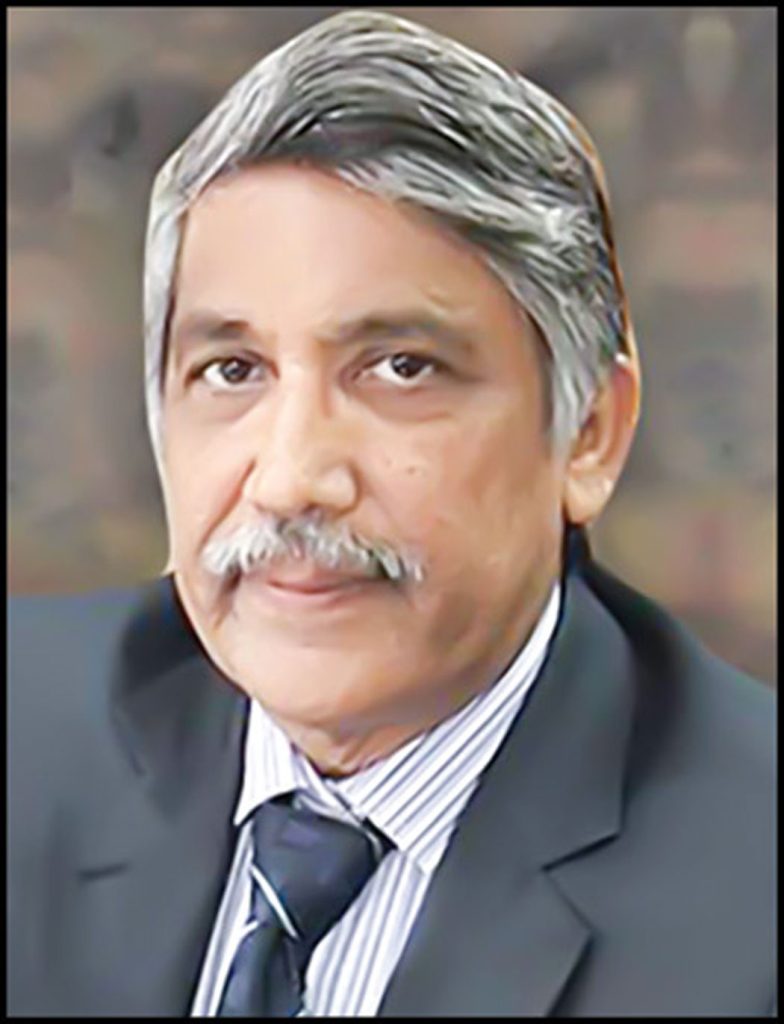Prof. Ghulam Asghar Channa*
Beyond the Basics
Laparoscopic cholecystectomy is widely considered the gold standard treatment for gallstone disease. Advances in surgical training and imaging and associated techniques have significantly reduced complications over time. However, in regions that have limited structured training and lack standardized difficulty scoring systems, the rate of complications remains high.

Prof. Ghulam Asghar Channa
A study conducted in a teaching hospital noted that complications occurred in 72.5% of the cases. The most prevalent complication was retained stones (32.5%), followed by biliary duct leakage or injuries (17.5%), and cystic artery bleeding (12.5%). Other post-operative complications included cystic artery bleeding and abdominal pain, with no reported mortality.1
Due to variations in surgical experience, patient factors, and equipment availability, no universal consensus exists among surgeons regarding the definition of difficult laparoscopic cholecystectomy (DLC). However, difficulty in identifying anatomical landmarks, distortion of Calot’s triangle, presence of inflammatory exudate, peritoneal adhesions, abscess formation, and fibrosis are significant surgical challenges.
Defining Difficult Laparoscopic Cholecystectomy
Some surgeons classify DLC based on intra-operative findings, i.e. any laparoscopic cholecystectomy exceeding 60 minutes, with bile or stone spillage, or resulting in injury to ducts or vessels, should be classified as difficult, while others argue that the difficulty should be assessed pre-operatively.
Studies conducted in Pakistan have reported DLC in 50.6% of laparoscopic cholecystectomy cases, highlighting the need for improved pre-operative assessment and prediction strategies.2
The Importance of Pre-operative Prediction
Pre-operative evaluation plays a vital role in anticipating difficulty, avoiding complications, and preventing forced conversion to laparotomy. Factors such as patient characteristics, surgical team expertise, and availability of equipment should be considered in this respect.
Structured pre-operative prediction helps with:
• Proper patient counselling
• Optimized surgical planning
• Availability of additional laparoscopic equipment
• Potential conversion to open surgery
• Cost estimation
• Procedure scheduling.
Scoring Systems for Predicting Difficulty
Globally, several scoring systems have been developed to predict DLC; they include:
Nassar Score: It classifies operative difficulty into five stages, based on intra-operative findings. Grade 1 easy, to grade 5 extremely difficult.
Randhawa and Pujahari Score: It focuses on pre-operative assessment of nine patient factors and imaging related factors to anticipate challenges, as compared to Nassar score based on operative findings.
RSCLO (Risk Score for Conversion from Laparoscopic to Open Cholecystectomy): It helps to determine the difficulty of Laparoscopic Cholecystectomy and the risk of conversion. It was compared with an indigenous scoring system in study, which was conducted in Bangalore, India, where the locally developed score system showed 100% sensitivity in predicting the need for conversion. Obviously, the study concluded the need to develop indigenous scoring system.3
Despite the existence of global scoring systems, Pakistan lacks a standardized scoring method tailored to local patient demographics and resource availability.
Proposed Difficulty Assessment Criteria
Based on existing literature and clinical experience, the following preoperative predictors may help to estimate DLC risk:
Patient History and Clinical Examination:
• Age > 40 years (+1)
• Male gender (+1)
• BMI > 28 (+1)
• Multiple hospital admissions for pain (+1 per admission)
• Comorbid conditions like diabetes or hypertension (+1)
• Previous abdominal surgery (+2)
• Tender upper abdomen (+2)
• Palpable gallbladder (+2)
Laboratory and Imaging Findings:
• WBC count > 12,000 (+2)
• Deranged LFT (+1)
• Thick-walled gallbladder (+2)
• Impacted stone or immobile multiple stones (+1)
• Contracted gallbladder (+1)
• Pericholecystic fluid collection (+1)
• Dilated CBD (+1)
• Fatty liver or cirrhosis (+1)
Intra-operative Indicators:
• Gallbladder covered with omentum
• Dense peritoneal adhesions
• Difficulty in identifying Calot’s triangle
• Mistaking vessels for ducts
• Short or absent cystic duct
• Distorted Rouviere’s cleft
• Requirement for additional equipment (endo loop, stapling device)
• Intraoperative sutures or extended operative time
Specimen Examination:
• Deformed gallbladder walls
• Multiple large stones with ulcerated mucosa
• Thick-walled, gangrenous gallbladder
• Presence of pus, sludge, or thick black bile
Conclusion and Future Directions:
AI based models of predictive analytics for the laparoscopic surgery are being developed. Built on patient specific data, AI enhanced augmented reality provides critical information during surgery. Deep machine learning model provides a gradient to predict difficulty in laparoscopic cholecystectomy. AI systems and computer vision learn decision making techniques by simulating different scenarios of difficulty and collection of patients data.
Currently, in Pakistan, predictive analytic use of the AI is in infancy, and there is no standardized indigenous difficulty scoring system which is tailored to local patient characteristics. Large-scale multicentred studies are needed to analyse variables like age, BMI, gallbladder wall thickness, bile duct width, and frequency of pain episodes. Multivariate statistical analysis can help develop an effective pre-operative risk assessment model and develop algorithms for deep machine learning.
Once validated, such scoring systems can enhance patient selection, surgical planning, and training programmes for medical professionals, ultimately reducing complications in laparoscopic cholecystectomy.
References
- Frequency of Biliary Complications in Laparoscopic Cholecystectomy ,Mohibah Khaliq, Muhammad Hadi Khan, Bakhtawar Awan, Zahid Saeed, Arshid Mahmood; P J M H S; Vol. 15, NO.9, SEP 2021 2590 (DOI: https://doi.org/10.53350/pjmhs211592587).
- Frequency of Easy and Difficult Laparoscopic Cholecystectomy For Cholelithiasis. Siraj, M., Kazim, E., Haider, S., Memon, Z., Ibrahim, F., Muqeet, A., Hyder, A., Rajput, I., & Khan, N. Biological and Clinical Sciences Research Journal, 2024(1), 1160. https://doi.org/10.54112/bcsrj.v2024i1.1160
- Pre-operative predictors of difficult laparoscopic cholecystectomy: a comparative study between two scoring systems. Swathi Santharaj, Sudhir Marahanumaiah. Int Surg J. 2022 May;9(5):960-966 http://www.ijsurgery.com pISSN 23493305 | eISSN 2349-2902)



